#biblically — in the actual text — God is referred to in places
Text
Looked up the name Pelageya cus even though I’m basically out of room to add anything, thought it was worth checking the meaning of her name, which took me to the wikipedia disambiguation page which linked to the saint of her name and
Pelagia's story is attributed to James[4][5] or Jacob[6][5] (Latin: Jacobus), deacon of the church of Heliopolis (modern Baalbek).[7] He states that Margarita was the "foremost actress" and a prominent harlot in Antioch. …
She had two of her slaves trail Nonnus to his residence and then wrote him on wax tablets, calling herself "sinful" and a "servant of the devil" but seeking mercy from God, who "came down to earth not for the sake of the righteous but to save sinners".[5] …
The archbishop was informed and sent the deaconess Romana to clothe her in the baptismal gown. Nonnus took her confession and baptized "Margarita" under her birth name Pelagia, with Romana serving as her godmother. …
The night before it came time to remove her baptismal gown, she stole out in the dark wearing one of Nonnus's chitons. She headed for Jerusalem, where she built a cell on the Mount of Olives. She lived there for three or four years, disguising herself as a male recluse and eunuch under the name Pelagius.[5] She then died, apparently as a result of extreme asceticism, which had emaciated her to the point she could no longer be recognized. -Wikipedia

#pelageya in the book who is gluttonous fun love it cute#not necessarily relevant per se but we enjoy the gender stuff#not to say sweet necessarily doesn’t:#the only thing i’ve seen him say on the subject#was a concise tweet#defending an interpretation of trans jesus#the daily mail was excoriating#because#biblically — in the actual text — God is referred to in places#with both male and female pronouns#and thus in the christian tradition that jesus /is/ God#therefore jesus must by necessity embody both genders too
7 notes
·
View notes
Text
i don't really have any solid conclusions about this yet but i noticed A Thing in a rewatch and i haven't found it mentioned elsewhere yet so here we go
(apologies for the appalling image quality you're about to see, i can't screenshot easily rn pls bear with)
OKAY so in the scene where crowley confronts gabriel about "shut up and die", something about the arrangement of book stacks caught my eye a little
the majority of the books are angled so that we mostly just see the page edges and not the spines clearly, EXCEPT for a particularly shiny and familiar colour combo right here-

but nothing too weird going on there, i thought, crowley coloured books in a bookshop so what? right up until i registered crowley's line when we get a closer look-

hhhhmmmmMMmmmm yes yes "everything just the way you wanted" huh, very interesting considering that we know how much thought goes into props huh
and for most of the shots we get of crowley in this position those freaking books are just quietly nestled right there in the corner-

look at that god damn framing i fuckin see you, you glorious bastards
so i paused to see if i could figure out what the hell was up with those fuckers and this is when i absolutely lost my mind, your honour
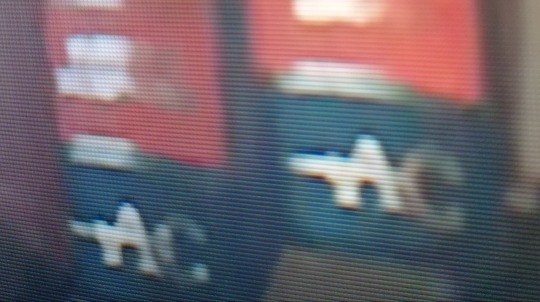
A and C you say?? in crowley colours???? framed like this?????? localised entirely within your kitchen???
anyway long story short they're two books from an Agatha Christie Crime Collection set (24 volumes, three stories per volume) and guess whats on the mfing front covers I'm-
(its a rant for another post but when paired with this other set of initials spotted in s2 i want to scream actually)
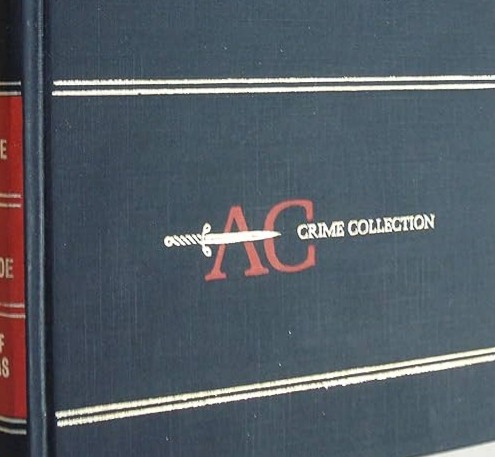
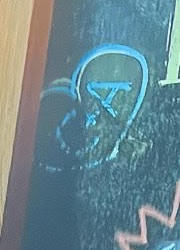

ANYWAY back to the books, through an absolutely unhinged comparison of the formatting of gold text blobs i reckon the two we have here are:
(on top) The Pale Horse; The Big Four, The Secret Adversary
(on bottom) 4:50 From Paddington, Lord Edgeware Dies, Murder in Mesopotamia
(I'm fairly confident but if anyone has a better image to confirm/correct this pls do)
now here is where I'll need a bunch of help from some Christie-heads out there bc I haven't read any of these and I've only seen the tv adaptation of one of them, so i dont know for sure if these are like A Clue, or A Cool Thing, or if I've just fully brainrotted myself into a fun lil corner here? wa-hoo
but here's some initial stuff that jumped out at me after skimming the basics:
(some of) the titles: Pale Horse/Big Four - death's horse ofc, the four horsemen mayb? the them+adam?? ; Mesopotamia is a very biblical choice bbz ; 4:50 From Paddington- azi likes trains i guess? idk that one's tenuous lmao ; honestly no idea with the other two but Secret Adversary feels a tad ominous
iirc Big Four just has kind of an unusual history, it was initially twelve short stories that she later compiled into one, and it was published fairly soon after christie's mysterious disappearance/reappearance
in Big Four, poirot fakes his death at one point and doesnt even let hastings in on it and I'm hoping sure its totally irrelevant to the ineffable bois
part of the Pale Horse story is a group of assassins that basically try to pass off all their murders as being actually caused by like ✨satanic powers✨ which is interesting
christie knew a fUCkton about poisonings thats why she wrote so many into her work and, while i don't believe the poison coffee theory myself, it sure is an interesting link with how cyanide is associated with almond smell/flavour and that metatron chooses almond syrup in particular
(ALSO random side note that is mostly meaningless but I've worked in a good few uk coffee shops and have never worked anywhere that stocks almond syrup; almond milk yes, hazelnut syrup yes, but never almond syrup...? prob just the places i worked though lmao)
EDIT forgotten point: I've seen some speculation that the bently's plate reading "CURTAIN" could be a reference to poirot's last story, along side that alternate scene of crowley ordering the sherry for "miss marple", its just one too many agatha christie references for my melted brain to handle and I'm SUS
so this is where i run out of idea steam and hand it over to you lot because i have no clue what this could mean, if it even means anything other than a cool set feature
is there something here actually or am i yelling into the void just for fun?
who knows, who cares!
#good omens#good omens 2#good omens spoilers#good omens 2 spoilers#good omens meta#ineffable husbands#ineffable idiots#agatha christie#hercule poirot#miss marple#can't wait to hear y'alls thoughts#SO WHY IS THERE A KNIFE THROUGH THE 'A' HUH#AND WHY IS THE 'C' ON THE CHALKBOARD SO FADED HMMM#GAIMAN EXPLAIN#things that make me go ngkk
242 notes
·
View notes
Text
The lost name

I think Vanitas’s real name could be Deucalion.
In this text I’ll cover my reasons for choosing this name, its connection to the story of Noah and the myth of Pandora and how would it correlate with the relationship of Vanitas and Noé.
Posting this as an actual answer to @scar-eyejolteon14 as promised here.
The lore of Deucalion
It all started when I was wondering what kind of name I could give Vani if I were to draw him as a Chasseur (ordinary human, who’ve never met Luna and never inherited their name). I began with the most obvious thing: checking Vani’s wiki page for existing details and references. I went with his zodiak sign, Aquarius, as the staring point, because stars and celestial bodies are recurring theme in VnC and well why not?..
The next obvious place to go is wiki page for Aquarius. Here we come across a fun thing: Babylonian star catalogues. They contained lists of stars, constellations, and planets.
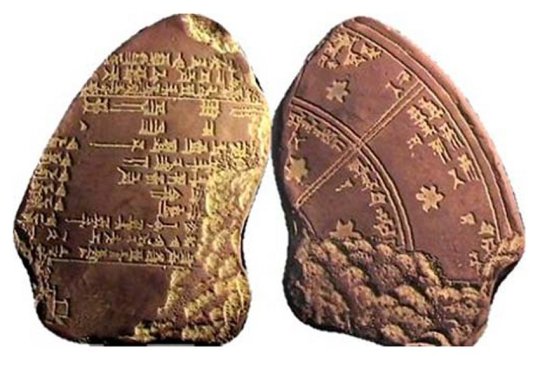

I found the first picture on a somewhat strange website, but whatever. This is a fragment of a circular star calendar, which belonged to the library of King Ashurbanipal (668-627 BC) in Nineveh. The second picture is a star list, found in Uruk (320-150 BC). It had information on all constellations such as names, number of stars, their distance, etc. Just so we understand that astronomy was a big deal there.
And yes, the capital of Babylonia was Babel — that one city with the tower (The Book of Genesis, Genesis 11) which is referenced in VnC.


(Ch. 21)
What did Babylonian astronomers think of Aquarius? Well, they associated this constellation with the Ea. “The Great One” is his title. He’s also known as Enki, god of magic, fertility, creation, etc., who was originally a water god (and his temple name E-apsu means “house of the watery deep", idk I think it sounds really cool). The water theme is not random: Aquarius was also associated with floods. Water was sacred, but also deadly: floods were source of destruction.

Later, a Latin author Gaius Julius Hyginus quoted an Alexandrian historian Hegesianax that Deucalion is to be identified with Aquarius, "because during his reign such quantities of water poured from the sky that the great Flood resulted." Again, we see the idea of destructive flood. But where does Deucalion bring us? To Noah. Or Noé, if you will.

(Ch. 1)
Deucalion and Noah
Both Deucalion and Noah are central figures of the classical flood myth, which exists in various cultures. While these two are probably among the most popular figures, there are other examples, including Utnapishtim, who was warned by the god Ea (who also created humans among other things) about the flood and instructs him to build a boat and save his family and animals. The stories of Deucalion and Noah follow the same pattern with some minor variations. But Deucalion is the one who is associated with Aquarius, the constellation that symbolizes the coming of the flood and all its terrors, while Noah/Noé is associated with salvation of human race and all living things.

Deluge, 1864, by Aivazovsky. This painting depicts a beginning of a biblical story about the near-end of human race. It’s pretty much the same in other versions of the story.
Deucalion and Pandora
What’s interesting, Deucalion’s myth is directly related to Pandora’s myth. Deucalion is usually described as the son of Prometheus, while Deucalion’s wife Pyrrha was the daughter of Pandora. And Pandora’s myth is among the core themes of “Pandora hearts”. If we consider the possibility of VnC and PH’s universes being connected, the idea of Deucalion being Vani’s true name would also make sense… For example, this theory covers the topic.
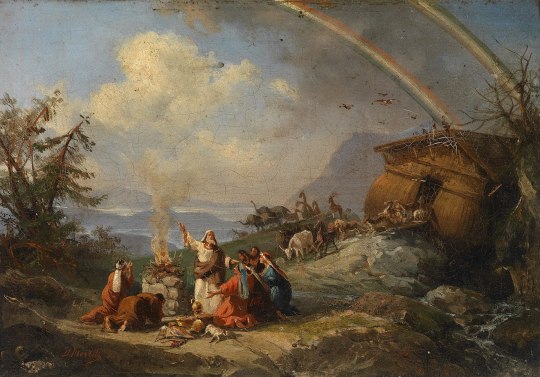

Left – Noah gives Thanks for Deliverance, 1901, by Domenico Morelli. Here we see Noah from the Old Testament, with his family, as they give thanks for their safe deliverance back to land after surviving the flood. A double rainbow signifies God’s presence.
Right – Deucalion and Pyrrha, 1636–1637, by Rubens. This painting shows a scene from the story of Deucalion and Pyrrha as told by Ovid in Metamorphoses. After surviving the disaster, they had to throw stones over their shoulders, each of which became a new human being.
Even if worlds of Pandora Hearts and Vanitas no Carte don’t exist in the same universe, there clearly is thematical relation between the two stories, one being about hope and another about despair. What’s even more interesting, there was actually a whole discourse about what’s hidden in Pandora’s jar: is it true hope or is it actually an illusion of salvation which hurts even more than actual despair? The translation of the word elpis, the spirit of hope in the jar, is actually neutral in its meaning. It’s simply “hope”, not inherently “good” or “bad”, which leaves a lot of space for interpretation in media.
Vanitas and Noé
Volume 3 cover implies that Vanitas will be marked by an Archiviste. It’s unknown whether this Archiviste would ne Noé or Machina or even some other. I hope it’s gonna be Noé, because it would break a specific border between them and it will definitely be very dramatic, but Machina might do it for the sake of obtaining information, which is her main thing. Anyway, regardless of who does this, when and why, I believe that this moment is probably the real possibility for revealing the true name of Vanitas.

On a side note, it would also be kinda interesting if Noé gets to know Vani’s true name, but it will still be hidden from us, the readers. There’s is also a possibility that Vani’s true name will not be revealed even in this situation. His goal is to erase everything related to the Vampire of the Blue Moon, and I guess that would mean erasing everything about himself too. But in Ch1 he promises to stay here even after he is gone, so it might imply that at least someone will get to remember him — perhaps as Xxxx the human, not Vanitas, kin of the Blue Moon. Which might mean going against Luna’s request…

(Ch. 50)
And, well, Xxxx could de Deucalion. Just think about it: wouldn’t it be cool if both Vani and Noé were given names with similar symbolism behind it and later both assume the moniker of Vanitas?
Plus the whole “loop” thing, like “memory loop” theory and “time loop theory” (here and here) again adds to the idea of connection between them. The loop where ends and beginnings melt into each other, like Ouroboros eating its own tail. The loop between Vanitas and Noé, where they will have to understand pointlessness and hopefulness of life – and what does in mean to save and be saved.
The ultimate hope of survival becomes fleeting dream for all caught in this loop. But every dream is destined to end, as pointed by Saint Germain. And what will happen, when Vanitas and Noé will have to wake up from the dream of their own? What will prevail - death and futility of life or salvation and rebirth?

(Ch. 55)
#vanitas no carte#memoir of vanitas#the case study of vanitas#vnc meta#vnc theory#vnc vanitas#vnc noé#vnc#mochizuki jun#case study of vanitas#noe archiviste#mochijunverse#vanitas no carte meta#vanitas no carte theory
56 notes
·
View notes
Note
Okay i saw your answer on etrogs so it made me wonder: etrog vs rimon, which is more Jewish?? (I’m not actually invested in a definite answer, but I’m VERY invested in the debate)
Rating: HERE’S THE DEBATE YOU WANTED
Answering this question necessarily requires a working definition of what makes something “more” or “less” Jewish, and what that definition is results in several different answers with their corresponding justifications. Does “more Jewish” mean “more important to Judaism religiously”? Or “more important to Jewish culture?” Or “belonging uniquely to Jews as opposed to any other enthno-religious group?” So, here goes:
More religiously important: ETROG. The etrog, also known as the citron, is one of the four species critical to the celebration of the Festival of Sukkot. Leviticus 23:40 commands that “on the first day [of Sukkot] you shall take the product of hadar trees, branches of palm trees, boughs of leafy trees, and willows of the brook, and you shall rejoice before your God seven days.” “Hadar” translates to “splendor” or “beauty” and is traditionally read to refer to the etrog tree. Interestingly, the Jerusalem Talmud suggests the possibility that “hadar tree” could refer to pomegranates before dismissing it, as the pomegranate has a “beautiful fruit but not beautiful wood,” (or possibly vice versa, scribal texts disagree), whereas the etrog has both beautiful fruit and beautiful wood, along a beautiful scent. (Jerusalem Talmud Sukkah 3:5:2). All that aside, there is mitzvah d’orieta (a religious obligation directly from the Torah, as opposed to an obligation established by the rabbis, a mitzvah d’rabbanan) that requires the use of the etrog, whereas all religious use of the pomegranate, such as at a Tu B’shvat Seder or as a siman on Rosh HaShanah, have merely the force of minhag (religious custom, not law).
More important to Jewish culture: RIMON. Pomegranates feature in a huge amount of Jewish art, especially as decoration on pretty much any Jewish ritual item. You can find them on everything from ketubot (marriage contracts) to hanukkiot (hanukkah menorahs). I’ve seen pomegranate tallitot, pomegranate mezuzot, pomegranate tzedakah boxes, etc. Personally, in my house, we have four different pomegranate mezuzot, a pomegranate hand-washing cup for ritual handwashing, pomegranate candlesticks, a pomegranate kiddush cup, and, ironically enough, an etrog box decorated with— you guessed it— pomegranates. (I also have pomegranate earrings and pomegranate socks, thank you fiance) (At the time of this writing, this blog is also a Jewish thing decorated with pomegranates). A search for “pomegranate” on Judaica.com offers 197 results, whereas a search for “etrog” turns up 4 actual lulav and etrog sets, plus 13 decorative boxes designed to safely hold one’s etrog during sukkot and not as decoration at all.
Pomegranates are one of the seven species biblically associated with the land of Israel, along with wheat, barley, grapes, fig, olives, and dates (Deuteronomy 8:8)-- a list that does not include etrogim. They are also an important motif throughout Shir haShirim (Song of Songs), in which the lovers frequently compare each other’s beauty to that of a pomegranate. Pomegranates symbolize beauty, fertility, fecundity, mitzvot, and merit, as in the annual Rosh HaShanah wish that “our merits be as plentiful as the seeds of the pomegranate.” A common (though inaccurate) bit of folk wisdom gives the number of seeds in a pomegranate as 613, one for each of the commandments given in the Torah.
In a particularly entertaining digression in the Talmud (Bava Metzia 8a) in which the rabbis are comparing their physical attributes (yes, this means exactly what you think it does), the narrative voice pauses to explain that if you want to understand just how unbelievably gorgeous Rabbi Yochanan was, you should take a “silver goblet from the smithy and fill it with red pomegranate seeds and place a diadem of red roses upon the lip of the goblet, and position it between the sunlight and shade. That luster is a semblance of Rabbi Yoḥanan’s beauty.” Does this really support my thesis? As minor evidence at most, but I will seize any opportunity to share that description.
Meanwhile, the etrog does not appear as a symbol or decoration in and of itself, only in the context of Sukkot and the other three Sukkot species. You may indeed see an etrog on the Torah curtain in Tishrei or in a panel of stained glass in the synagogue… but you’ll only know it’s an etrog because it has the lulav right next to it, generally as part of an array of holiday-related symbols. (I do, in fact, also own an etrog earring, but just the one— the other one is a lulav, thank you sibling.) There are a plethora of midrashim on what exactly the etrog symbolizes, but always as part of a set. For example, it’s often associated with the heart, to go along with the palm frond’s spine, the myrtle’s mouth, and the willow’s eye. As my fiance put it, “If you see a pomegranate on something, there’s a decent chance it’s Jewish. But without the lulav, an etrog just looks like a lemon, and there’s nothing particularly Jewish about lemons.”
Belonging Uniquely to Jews: ETROG. The citron is widely agreed to be one of three “true” members of the citrus family, along with the mandarin and pomelo, with all others the results of hybridization. Archeological and primary-document research confirms that the citron originated in eastern India and southern China, and was found in Sumerian ruins dating from more than six thousand years ago. It is referenced in the Vajasaneiy Samhita, a compilation of Vedic religion texts, called Yajur-Veda (ca. 1200-1000 B.C.E), and early Greek and Latin writers describe the citron clearly, mentioning its use as an antidote to poisons and a way to ward off moths from one’s clothes.* However, a 2015 study found evidence that the diffusion of the citron throughout southern Italy and the surrounding region dated to the destruction of the Second Temple and subsequent Jewish diaspora. The study concludes that their results “evidence the special role played by Jews in the spread of the citron as the authentic sacred fruit used in their Tabernacles ritual.”* It is worth noting that there is a variety of citron known as “Buddha’s Hand” that may be used as offerings in Buddhist temples, but it looks so dramatically different from what we know as an etrog as to be a different item entirely (and, indeed, multiple rabbis have ruled that it should not be used for fulfilling the mitzvah). Thus, the etrog is inextricably and uniquely linked to Jews.
On the other side of the debate, pomegranates appear frequently in art, stories, and cultural artifacts throughout the world, particularly in the Middle and Near East. These stories range from the Ancient Greek myth of Hades and Persophone, whose consumption of pomegranate seeds kept her in the underworld for the winter each year, to a Buddhist legend of a child-eating/stealing demoness whom the Buddha convinced to only eat pomegranates and become a patron goddess of children. Greece, Armenia, and Azerbaijan, among others, consider the pomegranate to be one of their important symbols. Traditions regarding pomegranates abound, including a Greek custom of smashing a pomegranate on the new year for good luck. They are widely considered a symbol of fertility, abundance, and good luck, similarly to their symbolism in Judaism. In short, while Jews are very into pomegranates, so are a lot of other cultures.
*Gina Maruca, et al. “Religious and cultural significance of the citron (citrus medica L. ‘diamante’) from Calabria (South Italy): A biblical fruit of the mediterranean land.” Journal of Environmental Science and Engineering A, vol. 4, no. 4, 28 Apr. 2015, https://doi.org/10.17265/2162-5298/2015.04.006.
74 notes
·
View notes
Note
About language brainrot. Imagine writer creator reader who finally learns how to write in Teyvat's weird symbols and they want to publish their book. They decided to do it anonymously to avoid the "aaaaaah our creator wrote the holy scripture" sort of situation. Except it didn't work. The reader's style is too different from the rest of the world, so even if they tried to simulate the flowery speech it wasn't effective.
Another thing. Reader who decided to read some local books to practice their reading. They asked for something simple and similar to their speech. But the only books merely similar to it are 2000 and more years old. It's funny how the older text is the more you can understand it. On this note. If reader write something i feel like it would be hard to understand for Teyvat's people.
Imagine a reader who is autistic or has any other NDs imparing their communication skills. They practically trained themselves to say sertain phrases in sertain situation. But it doesn't work in Teyvat. And everything just stacks at each other. Difference in speech, being a God (so people react weirdly to you), bad communication skills, not understanding nonverbal cues and so on. There's gonna be a lot of misunderstanding. I imagine how followers would walk on the eggshells not to upset and angry their God and reader who does the same not to say something people will get wrong. Again.
Reader who regained all their memories of creating Teyvat, they're super powerful and stuff. But they still struggle with the modern language. Because all the memories are like millions years old.
✨️NEXYLAZA UR SO FUCKING SMART AND CREATIVE✨️ UR BRAIN>>>>>> EVERYTHING
GIF Akashi (black hair) is all the people who read the Sagau/Isekai Genshin tag and Bokuto (silver) is STILL ME RANTING ABOUT LANGUAGE IN TEYVAT LMAO
They cant escape me, sorry people who just wanted to read SAGAU normal things, im filling up the tag💀

I HAD OTHER ASKS BEFORE THIS ONE AND AS I GOT THRU EM I WAS "OMMGGGG WE'RE GETTIN CLOSER TO NEXY'SSSS ASSSKKKK EEEEEEE"
YOU ARE A GODDAMN GENIUS
DHALALWKDHDHS
ME ABOUT THIS ASK:
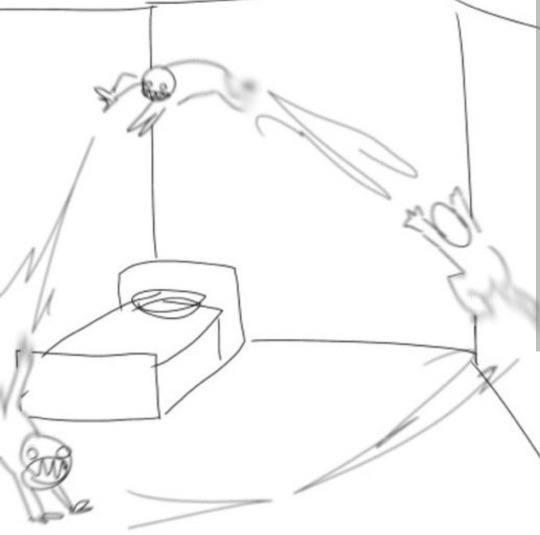
(^ lol biblically accurate deadaquarius)
I DONT EVEN KNOW WHERE TO BEGINNNN
BRAINROTTING OVER UR ENTIRE ASK!!
♡
Also, its getting kinda old now, so here is the blunt language v. Teyvat's flowery language post for reference! :)
Hhhhhhhhhhh
IF U WRITE STUFF
AND UR IN WORDY TEYVAT LAND
AINT NO WAY,👏
U COULD EVEN, 👏👏
GET CLOSE👏👏👏
TO THESE BITCHES SPEECH👏👏👏👏
◇
Like,, imagine right now if i told you to write me 4 pages of an essay in entirely early 18th century vernacular.
(For reference: when the story Pride & Prejudice takes place)
... like??
Bitch aint no way u can do that and actually show that to a historian or an actual living person from that time period
and them actually say "wow! An excellently worded 18th century essay!"
💀.
◇
So tying into that whole, "the only simple texts are like literal cunnieform clay tablets or sm shit"
Your writing to them just sounds like if a scribe just copied off what one of those tablets said just onto paper HAHA
And like, if u try and dress it up, it just ends up sounding like its from a slightly later time period
Like if ur casual writing sounds like 1 million years ago, u being flowery sounds like 8-7 thousand years ago u cant win LMAO
◇
Omg ur trying to go to that-
wait whats it called,,fuck i dont know Sumeru good enough yet
The.. HOUSE OF DAENA GOT IT
Yeah so ur thinking "Oh what better way to learn a dialect?/vernacular than reading books by them!"
And u basically snatch Alhaitham at the soonest possible chance to take you there
(Bc when i went in, it was just random lore books everywhere so)
Needless to say you have no clue how this place is organized, so u convince him to direct you to books u can easily read first
Like as close to your speech as possible!! U tell him :)
.
..
...lol
It literally takes like 3 hours to get something readable LMAO
Bc when the poor feeble scribe initially brought you smth he thought was pretty old and close to ur speech, like just first thought,
... It sounded like it was from the middle of the 18th century to you lol
So, with a "hmm" and a squint at the dusty book you'd already given up on
Alhaitham slowly went around the library making a stack of books, dropped them off in front of you... not a single sentence.
...then he made a stack of scrolls...
..nope..
...a stack of stone tablets...
.....getting closer?? it was really weird seeing Shakespearean language carved into stone....
...and then, with a conversation to a second library secretary deeper in the library, past a caged area of shelves to protect them...
...he escorts you behind the restricted section towards the back filled with glass display cases.
(Several of which contain the most ancient looking sets of artifacts you've ever seen)
...Finally, u arrive at a long glass case of several clay tablets.
Half of which sound like they're from the 1910s-20s, and the other, even older half, sounding straight out of the 2000s..
..
....
......
...Good god.
(Good..you??)
These crazy speaking bastard-previously-video-game-characters were right.
...
You are suddenly, viscerally hit with the image of Zhongli's idle, "Osmanthus wine tastes the same as I remember, but where are those who share the memory?" 💀
◇
Alhaitham side eyes you,, (he looks,, very interested, yet also kinda concerned??? HIM, CONCERNED????!!!)
"Ahem, the texts before thy Greatest Lord art the eldest- well, perhaps, more appropriately, the eldest and most intact, pieces of written language known to our humankind."
...
....aYOO MAN 😭😭
...Ur just staring at these half cracked, baked clay tablet thingys, full of slang from like 2003-
Alhaitham coughs.
"Uh, thanks. ...Sorry about all the.. trouble with this..."
BRO HOW OLD DOES HE THINK U ARE NOW-
"This task assigned to mine own person was of no trouble to my mind or spirit, Greatest Lord, fret not about it any longer."
And with a sort of shell-shocked atmosphere surrounding both of you, Alhaitham walks off to check out some other restricted books, hovering nearby yet also trying to give u space LOL
Top 10 cursed images: Seeing "Chillax, bro, dude, and weeb" carved into ancient clay tablets that look like they would be part of the Egyptian exhibit back in ur world 💀
◇
You eventually just kind of end up writing a couple pages after studying the writings, going younger and younger (nothing has ever made u feel more powerful...yet also more old..)
You stretch, just as Alhaitham finally has made his own little stack of creaky old books
He seems very curious to read what u wrote, peaking a glance over the top of his book every so often (lol nerd, cute nerd... but NERDDD)
You just offer the academic lunatic what he wants 🙄
"Haha, wanna take a look? Some drafts are... closer than others..."
The scribe immediately puts his book down, not even saving his page,
"I would be honored, Greatest Lord."
Is he excited?? 💀 omfg
U very slowly hand ur most recent practice pages over, he curls his hand under his chin "hmm" ing
...Alhaitham shakes his head
"My..deepest apologizes My Creator, but this still seems, at the earliest, from when papyrus was invented, and not yet even into scrolls..."
OK BUT ALHAITHAM WOULD GENUINELY GIVE NO FUCKS ABT CRITIQING YOU, HE MAY BE MORE POLITE ABT IT BUT EVEN IF U DID MAKE THE WORLD HES GOING FOR IT
KAVEH HAS A HEART ATTACK BC HIS ROOMMATE GOT ONTO GOD LMAO
U let ur head plop on ur pile of papers, srry babe youll never be as fancy as Mr. Darcy 😕
And as ur resting there, contemplating just walking out and finding smth to eat instead- same
Alhaitham picks up another draft.
Except it's your first attempt.
As in, you didn't even try, first attempt.
You just made some bullet point notes or some Bs, in ur regular. modern. language.
Alhaitham knocks his chair over standing up so fast-
(HE GETS SHUSHED BY THE RESTRICTED LIBRARIAN LOL, also another person unafraid to scold God lol)
...he says its a perfect example of the oldest records they've found of writing on the continent, most of which they haven't even translated yet
He asks u to teach him how to read this/speak like this lol
♧
(^^^not my best work but hope yall got smth outta it💀)
I WAS LITERALLY GONNA MAKE A WHOLE POST ON THE NEURODIVERGENT EXPERIENCE OF BEING A GOD IN TEYVAT
ESPECIALLY OF THE LANGUAGE BARRIER VARIETY!!!
THERES JUST
ACK
aCK HDHAKD
SO MUCH
TO SAY
!!!
AHHHHH
OK BUT LIKE
IF WE ACTUALLY TOOK THIS TO THE EXTREME IM IMPLYING IT WOULD BE
LIKE TEYVAT SPEAKS SEVERAL DECADES BEHIND U- MAYBE EVEN ACTUALLY
CLOSE TO PRIDE AND PREJUDICE TIMES SPEECH
THEY WOULD LITERALLY BARELY COMPHREHEND YOU
IMAGINE TRYING TO TALK TO MR. DARCY 😭
THATS LITERALLY ALL OF TEYVAT
JUST
???¿¿?????!!! <- THEM ALL THE TIME
ESP IF UR NEURODIVERGENT
I THINK IT WOULD BE EVEN MORE PROOF FOR THEM TO THINK UR GOD
BC UR BEHAVIOR WOULD BE "OFF" TO THEIR NEUROTYPICAL ASSES,
YOUR FACIAL EXPRESSIONS,
LIKE UR MASKING MAYBE BUT
U CANT KEEP THAT SHIT UP ALL THE TIME-
ESP IN CRAZY ISEKAI CIRCUMSTANCES
AND LIKE-
(ok ill tone it down before i also get shushed)
U used to be a player!!
Which would maybe mean u got rlly comfy playing Genshin all the time!
...like i know im kinda stimming when im gaming (and my natural stim is rocking so yeah no way they wouldnt notice that 💀)
So, since u may be still yknow unconsciously wanting to be comfy (esp around ur mains/team/favs)
U probably have stimmed a little around them, which, not that neurotypicals dont stim, but like
They would notice after awhile
And esp people like Alhaitham, Zhongli, Ningguang, Xiao, Ei, Aether/Lumine, Kaeya, Diluc, Kazuha, Heizou, Shenhe, Kokomi, Sara, Albedo, Dainsleif- !! GASP- !! <- my bbygirl omg i forgot abt u before now im so sorry </3
(once again i have not checked a character list, forgive my sins my readers)
^^^ Are like pretty focused on you/observant, so they'd eventually pick up on it first probably
..
...
....which allsssooo means they're like, collecting all ur neurodivergent thingys lol to compile as EVIDENCE AGAINST YOU AS TO WHY THEY KNOW UR THE CREATOR LMAO
◇
Honestly the biggest factor against u is definitely social interaction,, srry love :/
(if it helps, its bc i know itd be my downfall too thats why thats there ^ 😔)
Mostly bc i have this idea/theory? obervation? that when I especially met Adepti for the first time
Esp ones that werent as close to human society for as long as some others (like think Xiao vs. Ganyu)
And for literally every other non-human people we've met so far in Genshin-
They kinda- they kinda, radiate neurodivergent energy??
Like, they're not adherring to social norms, and not in like a bad way,
But its still rlly obvious (i mean also its probably exaggerated for us as an audience) that theyre not human pretty quickly
coughzhonglicough
COUGHVENTICOUGH-
oh geez wow excuse me, cold weather must be gettin to me- ahem hem-
Anyway, like what Nexy said in the ask,
...
...Yall are all just tiptoing around each other 😭😭
Bc these ppl arent from Earth countries,
All their behavior is weird to you 😭
U dont know how to mask with them yet 😭😭
THE UNBELIEVABLE AMOUNT OF MISCOMMUNICATION THAT HAPPENS ALREADY WHEN UR NEUROSPICY VS. NEUROBLAND PPL
IS LIKE, ALMOST WORSE??
Bc they cant even understand ur phrasing bc its so simple 😭😭😭
◇
Tldr: "Being Neurodivergent means ur a god, confirmed." - says all of Teyvat's denizens
◇
NEXYLAZA.
MY BELOVED.
I AM IN LOVE WITH UR BRAIN.
IF I COULD GIVE IT A HUG I WOULD🫂✨️👏👏👏👏
BC I WAS ALREADY LIKE IN THE BACK OF MY MIND LIKE-
*rubs my little rat gremlin hands together*
"hmHmHMMMM BuT wHaT iF mAYbE yOU reMeMbeREd cReATinG TeyVAT, hmHMHMMMMM"
AND FOR VERBALIZING IT WITHIN BLUNT LANGUAGE AU- !!!!!!!
(one of my favs, if u cant tell)
I would (platonically) kiss you right now dude.
Instead I give this:

♡ ily
And also, I AM GOING TO MAKE A WHOLE POST ABOUT THIS-
MAYBE EVEN A FANFIC, OR ONE SHOT AHDHAKFHSKLAAL-
UNTIL NEXT TIME MY BELOVED PARTNER IN CRIME <333
PSPSPSPSsppspspspssss Last Time! CLOSES TOMORROW @1pm CST: VOTE on my 100+ followers celebration POLL :)
Tell me what u wanna see me write about! PSPSPSPSpspspspssss
(U can vote even if ur new! :] )
THANK YOU FOR SUBMITTING THIS ASK
THIS IS A TREASURE OF MINE NOW
GONNA HIDE IT IN MY LITTLE CAVE OF SCREENSHOTTED SAGAU POSTS <333 hehehehehehehehehehe
THIS IS LIKE PT2 TO MY ORIGINAL LANGUAGE POST AHHHHH
NEXY BIG BRAIN ILYSM <3
Cheers,
🌒🌧🌊Aquarius♒️🌌🌘
♡the beloveds♡
@karmawonders / @0rah-s / @randomnatics / @glxssynarvi / @nexylaza lol ur own ask im a menace sorry
#NEXYLAZA NEXT LEVEL#ALWAYS SO EXCITED WHEN I SEE AN ASK OR A REBLOG FROM U#EEEEEEEEEEEEE#BLUNT LANGUAGE VS TEYVATTTT#GOD READER REMEMBERS BEING CREAATTOOORR#IM LOSING IT#ask box open#genshin impact#genshin sagau#sagau#genshin imagines#my asks#gender neutral reader#genshin sagau ideas#please send asks#genshin isekai#genshin god reader#genshin impact sagau#genshin imagines reverse harem#i mean what#genshin lore#i feel like i was vibrating typing all of my response#my favorite russian <3#perhaps even above childe#LMAO#al haitam x reader#genshin impact imagines#neurodivergent reader#neurodivergent imagines#genshin disability imagines
766 notes
·
View notes
Note
Enoch in particular is interesting bc of Saraqael. It's the ONLY text that lists Saraqael as an Archangel. Michael, Gabriel, Raphael, and Uriel are identified as the Supreme Princes of Heaven, and Saraquel is one of the "seven holy Archangels", which also includes those four. Sandalphon isn't listed, but I DO think a fun little fact there is that he and Metatron are the only angels whose names end in -on, likely a reference to how they're the only angels who originated as humans. I don't think he and Metatron are 'twins' in the literal sense though? Enoch (pre-Noah) and Elijah (post-Noah) weren't contemporaries. They just happen to be the only humans who become angels.
hi!!!✨ god im so sorry ive taken so long to get to this, anon!!! - tbh, im finding saraqael a bit of an enigma, both from the GO narrative perspective and indeed trying to work out who they were in terms of biblical/apocryphal significance... i hope you don't mind, but im gonna talk about saraqael in general in my response; as seems to be the way, i typically get carried away in answering what seems to be a fairly straightforward ask!!!
edit: further speculation on BOL and saraqael's potential role in it
saraqael theory(?)/analysis:
i think are a couple of crucial bits to saraqael in s2, and not just the ones where they recognise crowley etc. i talked a little bit about what i think their rank is in GO, which i don't think is the same rank as the other archangels, but perhaps a lower archangel like sandalphon. in terms of what saraqael actually does... it feels like they are essentially in charge of earth operations, or something to that effect.
muriel is, by all accounts so far, a (very?) low ranking angel. and yet, when muriel finds the matchbox, it's saraqael that accompanies them to the archangels to report it. now, that doesn't necessarily mean anything - muriel could have gone to a supervisor and then it got escalated, but what saraqael says here:

makes me think that, actually, saraqael knows muriel at least to a greater degree than the separation of an archangel (or whatever tier), and a 'lowly' 37th-class scrivener would have. in fact, this is the only scene other than presenting the matchbox, i believe, where we see saraqael and muriel interact? there is some kind of history there, and potentially even a degree of fondness.
now, let's take into consideration the theory that muriel themself may have been higher-ranking, and got Got by the metatron. they originally were going to demote gabriel to 38th Class; was saraqael similarly the one who wiped muriel's memory, as they attempted to wipe gabriel's? what was the purpose of saraqael being at the trial, other than to fulfil that purpose? and they took muriel directly into their chain of command as a means of keeping an eye on them, protecting them?
this kind of supports my thought that saraqael is somewhat an operations manager (but also...not just that at all*), doing essentially the archangel grunt-work, including keeping an eye on unauthorised miracles:

then we take a look at their interaction with crowley; because i do think there's a lot more to unpack in this bit than that they may have worked on a nebula together, and that crowley doesn't remember them.


summarising a couple of observations:
the seemingly innocent but assertive point made that the trial was in fact real, and didn't take a long time to happen start to finish
the fact that saraqael even notices the interaction between crowley and muriel: he's dressed as an angel (and demonstrated as being a 'bee' when michael/uriel don't fully catch it was him), muriel seems - despite the aesthetic of heaven generally - to be tucked away in the equivalent of a cupboard cubicle, and he accessed a file without, presumably, any alarms - the file recognised his former rank/that he 'knew' the password... so what exactly prompts saraqael to come over in the first place?
saraqael looks happy to see crowley, possibly even a little relieved, but once again like they're... fond?
they use his chosen name (specifically not 'crawley'), and use it with ease despite knowing him pre-fall and therefore, theoretically, not having any cause to use 'crowley' up until this moment
saraqael seems disappointed that crowley doesn't remember them.
where am i going with this bit? well, put simply. i think saraqael had some hand in the mechanics of the fall. i think they were meant to wipe the fallens' memories, but jigged about with the settings. perhaps, now, they regret their part in it, and is working to undo it somewhat, from the inside. i think, where they can, they protect those that get fully wiped (ie. muriel, and gabriel had the wipe gone to plan). and i think, maybe just their favourites, they keep an eye on those that actually fell. and i think that they are trying to break out this information without outright saying it ("well, don't let me interrupt you! show him the trial..."), because they know first-hand the consequences. and they know the consequences, because they are literally metatron's operational right-hand* angel:

this would explain why they seem to remember metatron in the bookshop: exposure to him? seems to fully understand how dangerous he is? not only does saraqael look genuinely apprehensive on behalf of michael, but watch their eyeline movement:

(ok but a moment of appreciation for how adorably derek jacobi says 'piffle' i mean💕)
it almost looks like it goes from michael, and then flips to up beyond michael? as they clasp their hands together? and then after the cut, they're actually breathing so heavily, out of... stress? worry? this is such a tiny thing that may well just coincidental actor-choice on liz's part, but it certainly works in the scene context... that saraqael seems quietly and calmly terrified.
another point, back on the subject of saraqael's role in heaven; i feel like the source of both the earth observation files michael gets in s1, and the fact that metatron says he's "looked back over a number of [aziraphale and crowley's] exploits" may have come from saraqael themself. that's a bit tentative, but it would certainly fit that it would come, at least, from their department. say - metatron has been spying on our boys through the sigil in the bookshop (or something to that effect), has gone to saraqael essentially for intel, and then put the offer to aziraphale to return to heaven in order to split them apart, after seeing the extent to which they're entwined with each other.
we haven't seen a direct, lone aziraphale-saraqael interaction, but their line about, "we'll be keeping a very close eye on you, aziraphale.", doesn't actually feel as ominous as i once felt. in fact, it's muriel that saraqael sends down which - let's face it, by all accounts they are not the angel to send down to earth when camouflage is key - feels actually like saraqael was banking on covering up the miracle for aziraphale and crowley, or at least buying them time.
last little bit: the comment on aziraphale's frisbee halo trick makes me think once again of saraqael's potential role as, essentially, head of operations (declaring war is rather messy, they're right), but also brings me back to the point i made here about the halo toss... somehow, i feel like it signifies something a bit more than just a casual hand grenade.

and now for the bible-y bits
well, i mean, there isn't really a lot to go on, lbr. as anon said (hi, anon, if you made it this far✨), they're described as one of the seven archangels in the first book of enoch (20:6), and if ive read correctly, the second book describes that they brought enoch himself to heaven... so maybe the GO narrative will follow this somewhat? if saraqael feels somewhat responsible for metatron being in the position he is, and having done the hypothetical things he's done? and that's why they might be trying to undo it, or undermine it?
i think the first book also describes saraqael (who i believe is synonymous with sariel and suriel, as well as other different but similar angel names in biblical/apocryphal texts) as being essentially the observer of justice and injustice on earth, "who sin in the spirit", which would also track against them having potential control over earth observations, and them potentially guarding over those that have fallen/have been punished by heaven.
i think some islam and talmud texts also indicate that saraqael may be azrael and metatron respectively, but i doubt that is an arc that the GO narrative will follow, nor indeed other bits and pieces from enoch that ive read through... but certainly there's enough that looks like it could have hypothetically inspired the saraqael story that im interpreting at the moment!
and as for metratr-on, and sandalph-on, iirc that is the meaning of the -on suffix, to reflect being born of man...? i looked at this a little while ago and found zephon as another example... parsing out abaddon kinda drove me a bit insane though, so that's where i left it! i agree that i doubt that metatron and sandalphon are twins, but definitely seems to speak to their origins, perhaps!!!✨
#another theory/analysis noone asked for#im so excited for more saraqael#i need them to be aziraphale's friend pls#good omens#ask#the fall/the great war spec#AWCW spec#metatron spec#memory wipe theory#book of life theory#saraqael spec#s2 meta#s3 narrative spec
75 notes
·
View notes
Text
Ok. My prev reblog got me thinking more about Anastasia and samael and they are just so fascinating. A few thoughts below:
Character names are important in the locked tomb series — that’s been well established from the end of gtn, when Muir literally holds our hand and points that out to us. They indicate themes, plot points, relationships. Significantly, we don’t get another naming explanation in ntn and there’s nothing but pronunciations for Anastasia and Samael for htn, leaving us to fill in the blanks. I think that the gtn appendix about names was more than just a fun add-on; it was Muir telling us how to piece the plot together. I’m going to build from some theories I r seen circulating/respond to them with a close reading of the names.
Now, on to the og ninth pair. (I know samael might not have been ninth because it wasn’t definitively founded until his death, but you know what I mean.)
Anastasia: first thing that comes to mind is the Russian princess. I’ve seen theories that Anastasia is the bones in the corner of Alecto’s tomb, which I find convincing. I’ve heard theories that she’s done something like Pal and might be coming back.
Anastasia, missing Russian princess, subject to countless theories and myths and animated movies about her possible return. Only to have her bones finally discovered in a basement. (It’s not confirmed which ones were hers out of her and her sisters’ remains, but all of them are accounted for.)
I don’t know if Anastasia is coming back. But frankly, I doubt it. She is gone. Anyone claiming to be her in Alecto is more likely to be an imposter.
Now, Samael. The first thing that stands out about is name is that it’s one of those -ael angel names. Not surprising, given the impact of Christianity/Catholicism both implicit in the text and, after Nona, now known to explicitly be something influencing the thoughts and actions and persons of many of Jod’s crew (especially Cristabel and Jod himself tbh).
Now, initially that was all I knew. I may have been raised Christian and been, unfortunately, a theology geek, but I do not have a encyclopedic knowledge of all angels ever. Knowing stuff about angels other than, like, Michael and Gabriel always seemed vaguely heretical probably due to boring American Protestantism conditioning, idk. But, I am expecting some deep theological cut with the name so I go to look it up. And boy oh boy was I not disappointed.
So Samael is an archangel who mostly shows up in Jewish texts and lore, not Christian/Catholic stuff. He’s 1) an ambiguous figure, sometimes a fallen angel and sometimes not; 2) often called the angel of death; 3) sometimes associated with Rome/Christianity as the embodiment of sin/danger/god’s wrath against Israel; and 4) in most depictions responsible for Eve taking the fruit, having ridden the serpent “like a camel” and convinced her to do so (because he doesn’t like humanity? To spite heaven? To give them knowledge? Idk how many of those are actual traditions of interpretation.) I unfortunately do not know enough about Judaism to unpack that in full, and I hope that I am not completely misinterpreting something, but it’s fascinating that the “angel of death” is linked to the same place where the “death of god” is laid to rest. Then, there’s the link with Rome/Christianity and how much the necromantic empire reflects those things. The thing that is making me so excited though is his association with the temptation of Eve, the Serpent, and the tree of the knowledge of good and evil.
Now. That’s interesting. There’s a character named Angel, or something that translates to that. And she has a dog named noodle. And another fascinating element of tlt it’s use of memes. Several others have pointed out the baffling and one-off connection between snakes (some even suggested the the biblical serpent just from that) and Noodle, with the literal quote “Noodle. Danger” from the Angel, and how it seems to reference the meme-form way of referring to snakes as “danger noodles.” We also know that the Angel is passing down something, possibly the implant, that is an important message. (Angels are, of course, messengers of god).
I think that what they are passing down is Samael, in some form. The Blood of Eden himself. The angel of death. The messenger. The serpent’s companion, the maybe-fallen. And I think that he is going to return in Alecto, as we encounter the death of god.
I always wondered why Anastasia wanted Jod there when she attempted lyctorhood, if that was the truth, how she could have discovered a potentially successful mode of true lyctorhood and not have suspicions about him. I think that “doing the ritual more slowly” wasn’t all she did. I think she potentially found a way to transfer Samael’s consciousness, let him piggyback like Gideon or Pyrrah in htn. I think she got him safe, or at least partially so, when Jod killed him. She wanted to trick Jod into thinking he’s gone or something maybe? I have no idea how the Blood of Eden would have gotten involved, but based on their goddamn name invoking Eden they are definitely linked to him.
If any of the original lyctors or cavaliers are revealed to still exist in Alecto the ninth, it will not be Anastasia, the red herring, the dead bones in a basement finally discovered and proven dead after so much speculation. It will be Samael, the angel of death, the temptation within Eden, the companion to the danger noodle serpent.
148 notes
·
View notes
Text
Will is the one who will end the UD-Apocalypse
This shot got me thinking (bear with me, it’s a bit long and complicated):

Will’s head is in-frame with Da Vinci’s Last Supper painting, on Jesus’s right-hand side where the disciple John is positioned. Throughout the whole scene Suzie is hacking, whenever the framing is face-forward, Will’s head remains right there. As if to symbolize John in-shot.
Here’s a few reasons why I find this particularly interesting:
First, historically, a great deal of speculation about John in this painting is if it’s actually him or Mary Magdalene. This is due to his longer hair and softer-featured appearance, as well as being the youngest of the disciples (not fully matured—no beard or chiseled features).
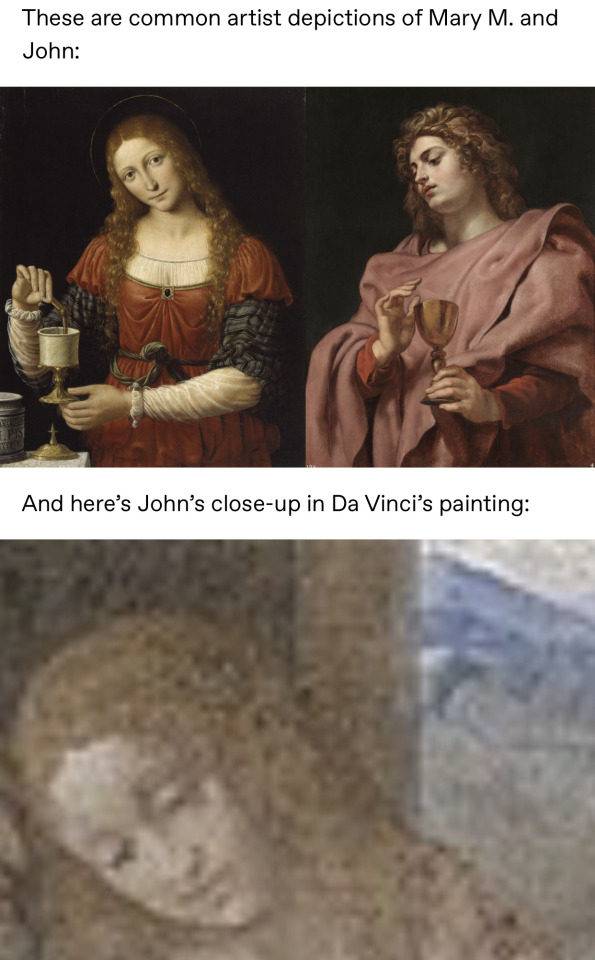
Similar. But this is John. The mistaken identity is often due to surface level analysis and is usually cleared when reminded that, according to biblical text, Mary is not listed as sitting at the table with Jesus and the disciples. She was at the event but only recorded as wiping feet. John, meanwhile, is explicitly mentioned sitting at the table.
But with the topic of mistaken identity and Will Byers…



I know there are more mistaken identity indicators in s1; these are just strong evidences as a reminder of the misleading searches that took place for Will and El. There’s an obvious theme for Will and El being mistaken for each other.
Second, John is often implied to be the closest to Jesus—‘the disciple whom Jesus loved,’ according to various versions of John 21 :20. I’ve read that this is because John is apparently a blessing directly from god, a heaven-sent comfort for Jesus. In many other artist renditions of the last supper, John is often leaning on Jesus to show this closeness. With Will in place to the right of Jesus specifically, positioned where John is—his head even leaning toward Jesus every time there’s a face-forward shot—and it’s John who Jesus loves most…
This might be an odd take, but maybe it indicates how Will is Vecna’s most ‘favored.’ What if, in a twisted way, like when Will said in s2 the Mind Flayer didn’t want to kill Will himself but everyone else, this just means Vecna will prioritize Will in a way that insures his favorite is kept close? He needs him. Of course he favors Will and wants him above everyone else, maybe, as an example theory, to use him to reshape the UD and world itself (since it appears the UD is bleeding into Hawkins). Will might have frozen and/or reshaped the UD on the night he was abducted, so Vecna might want to bend this world—upside and down—to his ideal if he can keep Will close.
As an addition to this point for that theory, Vecna was the one talking about ‘transcending his human form’ in The Piggyback. In line with Jesus becoming human and then ascending his human form, Vecna desires this outcome for himself as well. Jesus does this in death. Henry starts his journey as Vecna, on the road to his further ‘potential,’ after this scene:

Cross imagery, a ‘death’ in the way that he becomes less human once he’s banished to the other world. Now, he still hasn’t transcended his form the way he wants. He’s not done working toward his transcendence. And he needs Will to get there.
Vecna would view Will, a boy with traits/abilities/powers he desires for his means as a ‘blessing’ in that twisted fashion. And might view Will as a comfort due to the ways they are similar.
Third, John is usually believed to have written the book of Revelation (sometimes referred to as the Apocalypse of John), which is literally an apocalyptic prophecy. Hellish evil consumes the world—

—but is eventually defeated. The prophecy ends in victory.
With heaven-sent fire.
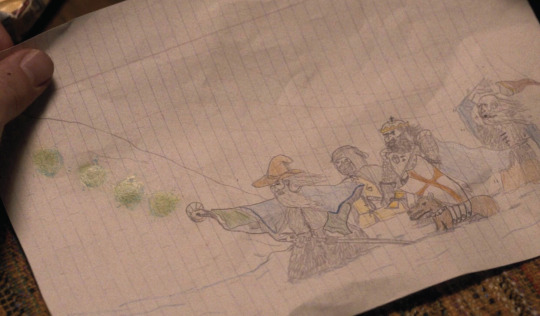
I’ve expressed briefly in other posts that I think Will is going to be the ultimate victor against Vecna, and I don’t think that’s an uncommon conclusion for many of us here anyway. But with a disciple John parallel analysis for Will, and John writing the end of an apocalypse in victory, it just strengthens the narrative that Will would be the hero against the apocalypse unfolding from the Upside Down. People might expect the final victory to be El’s, from the very beginning even. But the likelihood is it’ll be Will’s. Especially when paired with the events of the party’s last DnD campaign in s1 that may foreshadow s5’s final battle:

The Thessalhydra resembles the three-headed dragon in Will’s s4 painting. Mike’s leading the party in this painting, BUT it’s Will’s ultimate action against the beast. Lucas says fireball, Dustin says fireball, Will casts fireball, and it brings them to victory.
But not just fire based on what we can grab from the show. There’s an array of powers Will could possibly have; we have a crazy amount of theories speculating on electricity, healing abilities, fire, telekinesis, creation—just many possibilities. Will could even be multi-powered.
Here’s what imagery and subtitles I grabbed in-between all the times Will’s head is positioned over John:

Electricity sparks, fire crackles, and the world is changed? Changed from what Vecna’s turning it into maybe?
#will byers is the ultimate hero#will byers#will byers has powers#will byers has creation powers#st theory#vecna#henry creel#will henry parallels#st5 speculation#byler#bingham house
158 notes
·
View notes
Note
Hi! First of all - I adooore ABM! I instantly bought the revised version after reading the previous one (I liked it even more for all the little extra scenes, my heart bursted reading the Michael x Lucifer kissing scenes). Also, I really need to know what happens to Rosier and Asmodeus after the fall ahhh. Your writing is magnificent, I really look forward to part 2. But anyway! To my question - where did you collect all the background information on the demons? To be frank, I'm so interested in them, but there's tons of (false) information out there and I thought maybe dear Rizzfael could recommend a reliable source for curious cats?
Aghhh thank you so much! I'm glad you enjoyed!! The Michael x Lucifer kiss bits were fun to add — they're also so embarrassing. They're both so embarrassing to me.
So — I got my information on demons mostly from the canon Bible. Baal is in the Bible, so is Beelzbub, who he is usually conflated with; Beelzebub is often translated as "Lord of the Flies", hence I decided Baal was the angel of flight.
Asmodeus is from the Book of Tobit, which I'm very familiar with given my very Catholic upbringing. He is associated with lust, given what occurs in his story.
Mammon and Moloch I got from Paradise Lost, but theyre in the Bible as well. They're in the Bible, though they're not "really" demons and seem to be representations of money and a Canaanite god who liked child sacrifice. I made them the angels of gold and gift-giving, naturally.
Ishtar is not mentioned by name, but there are allusions to him/her as a goddess in Jeremiah 7:18. With Ishtar, I was just looking for another instance of a foreign god treated as a demon in the Bible.
Gemory and Seir are non-biblical. As much as I'm a stickler for sticking to the Bible, I did want to make a reference, even if small, to demonology. Gemory and Seir are from The Lesser Key of Solomon, which is probably the most famous demonology text or, well, its one of the Big ones.
(I actually used to confuse The Lesser Key of Solomon and The Testament of Solomon, both foundational demonology texts. Asmodeus being good at construction is taken from The Testament of Solomon. On that note, The Key of Solomon is also a pretty foundational text — demonologists love Solomon!)
And Rosier was taken from a random book I found in the medieval studies section at my library. He's not biblical, he's barely even in demonology.
I may be the wrong person to ask given I'm not super into demonology itself, but reading the Solomon texts is a good place to begin if you're looking for footing!
17 notes
·
View notes
Note
Ok saw your god/jesus/holy spirit poll and its like 2 am and im so tired but i NEED to talk abuot it ok. Hi i was raised christian (roman catholic to be precise) and still know enough about it to toss my own two cents in.
Long answer: The Father (hereafter referred to as "God"), The Son (hereafter referred to as "Jesus") and The Holy Spirit (hereafter referred to as "Birb") are, biblically, one and the same. God is Jesus is Birb is God. I should have picked a better name for the holy spirit but its too late now. Now, they do all have what we mortal humans would perhaps call 'separate personalities', and have been known to go as three separate entities (see basically the entire new testament, where Jesus, born mortal on earth, speaks frequently to God, who is referred to as Jesus' father. This would, if we took it literally, make it incest (parent/child. uh/beast ig). However, there are very few times when the Bible is actually literal. It is a text famous for its proverbs and allegories and parables (side note - one of the major times Jesus is literal in all of the New Testament is when he gets pissed at a bunch of merchants for charging entry to a building of worship, and filling it with their own sellable goods, so he walks in and just beats the shit out of them. theres not really an allegory there just. fuck the rich and the people who encroach on your places of worship with sponsorships).
Got distracted. what i am getting at is that it is much better to take Jesus' words with the knowledge that, as he speaks to us, he is speaking to us as a being beyond mortal comprehension, as God is, and so is he. John 10:30 (yes i did research for this) according to biblestudytools dot com says "I and the Father are one.” While there are groups of thought dedicated to both the idea that God/Jesus/Birb are one, and that God/Jesus/Birb are three separate individuals (and apparently the latter hang out on reddit), in my churches it was pretty widely accepted that the Trinity was One split into three.
Short answer: it's selfcest
oh my god. ok thank you for this.
2 notes
·
View notes
Note
Do you think Behemoth and Leviathan were actually real and happened to be dinosaurs? Behemoth was a huge and formidable land dinosaur while Leviathan was a pleisiosaur. Technically, plesiosaurs weren't dinosaurs, but you get my idea?
So I've been sitting on this ask for a little bit because I honestly didn't know what tone to take in answering it. I don't know your background, and thus don't know whether to be more blunt or delicate. Ultimately, I settled on blunt, simply because I could not figure out how to answer this question delicately. That said, I hope you take this in the gracious spirit in which I have written it.
SO. That's a hard no from me, friend. Let's discuss!
So typically when you hear people say that Behemoth and Leviathan were dinosaurs (or dinosaur adjacent), it's in the context of arguments in favor of young earth creationism. It's a fairly big talking point with the Answers in Genesis crowd. Basically, they make the argument that Biblical texts referencing creatures that superficially resemble dinosaurs are evidence that humans and dinosaurs could have lived at the same time.
This works out if the earth is only 6,000 years old, but not if we take paleontology, geology, or human evolution at all seriously. The writer of Job would have had no way of knowing that dinosaurs and plesiosaurs existed because they had already been extinct for many millions of years. Even if you want to argue that maybe God is describing creatures with which Job was unfamiliar, it still doesn't track. God's address to Job treats these creatures as something for which he has a point of reference. It also just doesn't make sense why God would choose this moment to reveal the existence of dinosaurs. Talk about a tangent!
I don't know where you fall on the spectrum of Christian beliefs regarding origins and the age of the earth, but I've written at length on this blog about the case for theistic (old earth) evolution, so I won't rehash that here. Check out my all truth is God's truth tag or shoot me an ask if you want more on that. Regarding Behemoth and Leviathan, however, I think some of the same exegetical skills involved in reading (or misreading) Genesis are involved in the relevant chapters of Job.
When God addresses Job out of the whirlwind, he uses poetic language. He's talking about a real thing (his sovereignty over the universe), but it's something that transcends human comprehension on an overwhelming scale. Much like we can't ever hope to wrap our heads around deep time, we're simply not capable of grasping the extent of God's sovereignty.
When God describes storehouses of hail reserved for the day of battle, are we supposed to literally think that there is a giant building in heaven where God keeps all his hail? Or is it a picture of God's might as both creator and judge of the universe? If we know our Bibles, we see that hail is frequently used as a tool of judgement against God's enemies: Egypt, the Canaanites, apostate Israel, and ultimately the rebellious earth. So when God describes his storehouses of hail, we see the reality of his total control over the arc of history, his ultimate justice, his orderliness.
Likewise, Behemoth and Leviathan use the established language and symbolism of Scripture to convey truths for which plain language wouldn't suffice. Behemoth's description isn't that of any real animal, living or extinct. God paints a picture of a creature that no man could ever hope to tame and expresses that he, God, can.
Leviathan is the longer and more interesting image; it's a mighty creature of the deep that breathes fire and cannot be controlled. We know that in Biblical parlance, water is frequently associated with chaos (too many places to enumerate, but Psalms, the Prophets, and Revelation are good starting places). Leviathan is a picture of this chaos: mighty, rearing, deadly, uncontrollable, terrifying. Then God says to Job, "Can you draw this creature out with a fishhook? Can you make a covenant with him? Will he serve you? Can you injure him? Do you have any means at all of controlling the chaos monster? I do." It's poetry used to express a truth that we humans cannot hope to grasp otherwise: We cannot control the chaos of the world around us. We can't even try. But God can, and he does it effortlessly.
So no. Not dinosaurs. And I think that arguing that they are, especially trying to pick through the text and figure out which ones they're supposed to be and using that to argue for literalistic interpretations of Genesis, really misses the point and the power of what God is saying here.
I think Job's words back to God at the end of the book actually give us a remarkably important principle when it comes to Biblical interpretation: "I have uttered what I do not understand, things too wonderful for me, which I did not know." The whole Bible is too wonderful for us. God condescended in order to give us his truth, and he had the magnificent grace to give it to us in ways that we can begin to grasp.
I think a lot of really literalistic reads on Scripture (Job, Genesis, Revelation, and elsewhere) are a kind of grasping at control. There's an assumption in it that God gave the ancients an exact accounting of things that humans just aren't equipped to fully comprehend.
That doesn't mean we shouldn't try! But it does mean that when we read Scripture concerning the Big Things: the Sovereignty of God, the creation of the universe, the origin of life, eternity, infinity, even spiritual mysteries like the Trinity and the nature of the Incarnation, we have to approach it as something fundamentally beyond our comprehension which God is showing us the edges of. We can see other, different edges of many of those same things through scientific observation (or philosophy, or whatever other disciplines-- not all of the Big Things are scientific in nature.)
It's like Isaac Newton said: "I do not know what I may appear to the world, but to myself I seem to have been only like a boy playing on the sea-shore, and diverting myself in now and then finding a smoother pebble or a prettier shell than ordinary, whilst the great ocean of truth lay all undiscovered before me."
#i really really hope that this doesn't read as unkind#i really appreciate the question! and i don't know where you're coming from generally#but this stuff makes my heart sing#or ache sometimes when i see people reading the Bible in certain ways#i love my YEC brothers and sisters which is why I'm so passionate about theistic evolution#it's about panting after truth-- all truth any truth more truth than I can ever have#and yet recognizing that some truths are too lofty for me#i wish like hell that I could cast my mind back and really understand deep time#the eons the clockwork-precision the tides leading to life#i wish that i could understand the mysteries of knowledge the mysteries of God's sovereignty of suffering of grace of the Godhead#i will have so so many questions for God when I see him face to face#and even then i probably will not be given all the answers#i am trying to learn how to be okay with that#side note: there will be scientific research in the new heavens and the new earth i am all but sure of it#all truth is God's truth#ask me hard questions
15 notes
·
View notes
Text
Who Begat Whom?

by Ken Ham
Most of us love to read portions of Scripture that give accounts of victories, miracles, and such. What we enjoy far less are the Scriptures that outline where a certain person begat a son or daughter, who in turn begat a son, thus beginning a long list of begats. Most people feel the genealogies contain only dull details, but those of us who keep in mind that “every word is given by inspiration of God” see that even these so-called dull passages contain vital truth that can be trusted.
Genesis chapters 5 and 11 contain two such genealogies, which some people think can be read to help them get to sleep. It may be hard to believe, but Genesis 5 and 11 are actually two of the more controversial chapters in the Bible, even in Christian circles.
Because so many Christians including Christian leaders have accepted the secular dates for the origin of man and the universe, they must work out ways that such dates can somehow be incorporated into the Bible’s historical account. In other words, they must convince people that the Bible’s genealogical records do not present an unbroken line of chronology. If such an unbroken line exists, then we should be able to calculate dates concerning the creation of man and the universe.
To fit the idea of billions of years into Scripture, many Christian leaders, since the early nineteenth century, have re-interpreted the days of creation to mean long ages. Biblical creationist literature has meticulously addressed this topic many times, showing clearly that the word day, as used in Genesis 1 (the context with a number, evening and morning connected to each day) for each of the six days of creation, means an ordinary, approximately 24-hour day.
Many Christian leaders also claim there are gaps in the Genesis genealogies. One of their arguments is that the word begat, as used in the timeline from the first man Adam to Abraham in Genesis 5 and 11, can skip generations. If this argument were true, the date for creation using the biblical timeline of history cannot be worked out.
In a one debate, a well-known progressive creationist stated that he believed a person could date Adam back 100,000 years from the present. Since most modern scholars place the date of Abraham around 2000 BC (Ussher’s date for Abraham’s birth is 1996 BC), the remaining 96,000 years must fit into the Genesis 5 and 11 genealogies, between Adam and Abraham.
Now, if we estimate that 40 years equals one generation, which is fairly generous, this means that 2,500 generations are missing from these genealogies. But this makes the genealogies ridiculously meaningless.
Those who claim that there are gaps in these genealogies need to demonstrate this from the biblical text and not simply say that gaps exist. However, consider the following:
Although in the Hebrew way of thinking, the construction “X is the son of Y” does not always mean a literal father/son relationship, additional biographical information in Genesis 5 and 11 strongly supports the view that there are no gaps in these chapters.
So, we know for certain that the following are literal father/son relationships: Adam/Seth, Seth/Enosh, Lamech/Noah, Noah/Shem, Eber/Peleg, and Terah/Abram. Nothing in these chapters indicates that the “X begat Y” means something other than a literal father/son relationship.
Nowhere in the Old Testament is the Hebrew word for begat (yalad) used in any other way than to mean a single-generation (e.g., father/son or mother/daughter) relationship. The Hebrew word “ben” can mean son or grandson, but the word “yalad” never skips generations.
In the debate (mentioned previously), various biblical references were given as supposed proofs that the Hebrew word “yalad” does not always point to the very next generation. However, when analyzed carefully, these arguments actually confirm what we are asserting concerning the word “begat,” that it does not skip generations. A detailed article on the Answers in Genesis website discusses this.
The Scriptures themselves attest to the fact that the secular dates given for the age of the universe, man’s existence on the earth, and so on, are not correct because they are based on the fallible assumptions of fallible humans.
Nothing in observational science contradicts the timeline of history as recorded in the Bible.
But there are two more reasons that these genealogies are vital. First, they are given in Scripture to show clearly that the Bible is real history and that we are all descendants of a real man, Adam; thus all human beings are related.
Second, the Son of God stepped into this history to fulfill the promise of Genesis 3:15, the promise of a Savior. This Savior would die and rise again to provide a free gift of salvation to the descendants of Adam—all of whom are sinners and are separated from their Creator.
Without the genealogies, how can it be proven that Jesus is the One who would fulfill this promise? Indeed, perhaps the primary purpose of the genealogies is to show that Jesus fulfilled the promise of God the Father.
We can trust these genealogies because they are a part of the infallible, inerrant Word of God.
Another verse to ponder that attests to the fact we can trust those genealogies is this one:
“It was also about these that Enoch, the seventh from Adam” (Jude 1:14).
5 notes
·
View notes
Text
So, Good Omens the book has two official translations into Hebrew.
The first one came out in 2006 and translated by Boaz Weiss. And is the first version of Good Omens I ever read!

And the second time came out in 2020, just in time for the 30th anniversary and Live Action Adaptation Synergy, and translated by Tomer Ben-Aharon.

And these two versions….
Man, I really want to say that they both have their own strengths and weaknesses - but that’s not exactly true... What’s actually going on is that, like, my nostalgia for the First Version of Good Omens I’ve ever read aside, the 2020 version is like clearly the superior version. I mean, it's not BAD by any means, but still.. Like, the 2006 translation straight-up removes a few sentences and lines of dialouge from this book, seemingly just cause they were a bit hard to translate. And there's some changes that seem to be purely a matter of 'the translator didn't know what a Word meant, made an Educated Guess from context, and guessed a bit wrong"
In comperison, the 2020 version has less errors, it doesn't remove any lines. And it also allows itself to stick less closely to the exact wording of the original English in order to make the dialouge feel more naturalistic in Hebrew and make sure each character preserves their unique dialouge quirks. And there's some real interesting and fun solutions to the book's bigger translation challanges. In general, it is both a more accurate and a more creative translation.
And the 2020 version does also has flaws and issues, but most of them are shared with the 2006 version (for example, neither version figured out what the joke is in ‘a pair of consenting bicycle repairmen’)…but…
But…
BUT
There is one Thing in Good Omens that the 2006 version translated so much better than the 2020 version. And it’s a Recurring Thing, and it’s a Thing that is SO THEMATICALLY IMPORTANT to Good Omens as a whole, and it’s handled really brilliantly in the 2006 version. And that one thing feels so important to me that it really single-handedly stopping me from definitively recommending the 2020 version over the 2006 version.
Okay, so, since Modern Hebrew is a language primary used by Jewish Folks - it doesn’t really have dedicated words for the Christian concepts of ‘Heaven’ and ‘Hell’. What we do have are words for close-enough concepts in Jewish Theology - that when used in these kind of contexts, can easily work as a stand in for the Christian (or at least Christian Pop Culture) concepts of Hell and Heaven.
The problem, for Good Omens at least, is that these two words are “Gehinnom” for Hell and for Heaven it’s “Gan Eden”
(Which means “Garden of Eden” in case you didn’t get it)
And usually this conflation between the theological concepts of Christian-pop-culture-Heaven and the Garden of Eden isn’t that big a deal. But, you know, in Good Omens, Eden and Heaven are distinctive different things with extremely different thematic roles!!
And the 2006 translation handled this problem really elegantly, I think. Rather than the usual “Gan Eden”, ‘Heaven’ was translated as “Shamayim”. This Hebrew word is usually used to literally just mean “sky” in Modern contexts (as is “do you like the color of…”) but it can also be used poetically to mean ‘that place God and Angels hang out at”. In Biblical contexts these two ideas are often conflated (if you were like ‘wait if there’s no Hebrew word for ‘Heaven’ what does it say in that or this Bible passage?’, the answer is almost always “Shamayim”)
It’s almost like an inverse of the word ‘Heaven/Heavens’ in it's modern use - by default it is used to mean the theological metaphysical concept of God's residance and/or the Good Afterlife and more rarely and poetically used to mean the air between the ground and outer space. “Shamayim” is ‘sky’ by default and “God Zone” more rarely. All of this, plus the original English text already having a lot of references to Heaven being ‘Above’ is enough for it’s use in the Good Omens 2006 Translation as the word for 'Heaven' to feel 100% natural and coherent.
Plus, while the word “Gehinnom” does not have the same thematic and theological problems as “Gan Eden” does in GO, it was also swapped out for “Sheol”. Which is also a rarer word for a hell-like place - making the use of “Shamyim” feels more natural and keeping the alliteration of Heaven-Hell and Gan Eden-Gehinom.
(There is one line in which ‘Heaven’ is translated as ‘Gan-Eden’ instead of ‘Shamayim’ and that is this classic passage:

Obviously the line “the sky is not found in England” wouldn’t make any sense. So ‘Gan-Eden’ was used instead and… I think that line still makes enough sense like that. Since Aziraphale was the Angel guarding the Gates of Eden and that’s how he got to Earth in the first place, you can also say that's where he's from. I think it works well enough considering the circumstances.)
So, yeah, I think that was a very wonderful solution. It’s a good reminder that despite my frustrations with the 2006 translation it was still done with a lot of Actual Effort and thinking behind it. So what did the generally-better 2020 translation do to solve that same Heaven-Eden problem?
Nothing.
In the 2020 translation, the Garden of Eden is “Gan-Eden” and Heaven is ALSO “Gan-Eden”. The earthly garden of earthly pleasures where Aziraphale and Crowley met and the place where all the Angels hang out at use the EXACT SAME WORD. And no attempt is made within the text to distinguish between the two in any way.
It really drives me nuts. There so many little interesting translation gems in the 2020 translation that I absolutely love. But I just… can’t recommend this translation to anyone wholeheartedly when it has this small-yet-huge-problem right in the middle of it.
And it's also frustrating cause I checked a bit of the official translations for GO the Show on Amazon Prime (there's dubs and subs) and those ALSO translate Heaven as 'Gan Eden'!! It's so frustrating cause yeah, that's a Translation Challange, but it's one that's been technically solved already!! Why is the only Hebrew version of Good Omens with a decent solution to the Gan Eden Problem ALSO the version where Aziraphale is really into pickles???
14 notes
·
View notes
Text

A painting of Noah’s Ark. The Old Testament story has not only inspired countless generations of artists, but also more than a century of “scientific” attempts to find the remains of the legendary ark.
For a long time, people have been searching for the ark that scripture says survived the flood. Archaeologists say it is a fruitless task.
Noah’s Ark is one of the best known and most impressive of all Old Testament stories: God was so displeased with humans after creating them that he sent an all-encompassing flood on Earth to destroy them – with one notable exception: one man and his family, accompanied by pairs of each of the planet’s animals, survived the flood in an enormous wooden ark.
For people who accept the religious text as a historically accurate account of actual events, the search for archaeological evidence of the ark is equally fascinating, prompting some intrepid believers to search for traces of the wooden ark on the slopes of Mount Ararat and beyond.
In 1876, for example, British lawyer and politician James Bryce climbed Mount Ararat, where biblical records say the ark stood, and claimed that a piece of wood “conforming to all the requirements of the case” was in fact part of the ark.
More modern ship “discoveries” are happening regularly, from the report that someone else saw it in a rock formation high on the mountain in the 1940s, to the claim by evangelical pastors in the early 2000s that they found petrified wood on the summit.
But the search for this ship has drawn all sorts of emotions from academic archaeologists and biblical scholars, ranging from outrage to scorn.
“No legitimate archaeologist would do that,” says Jodi Magness, an archaeologist at the University of North Carolina, about the modern search for evidence of Noah’s Ark.

Flood or fiction?
Stories of devastating floods and their survivors predate the Hebrew Bible, the earliest parts of which are thought to have been written in the 8th century BC.
Legends of a flood destroying civilization at the behest of a supernatural deity can be found in numerous Mesopotamian texts, from the Epic of Gilgamesh, written in the early 2nd millennium BC, to a recently deciphered Babylonian cuneiform tablet from 1750 BC on how to build a ship.
Could these flood myths be based on reality? “There seems to be geologic evidence that there was a major flood in the Black Sea region about 7,500 years ago,” says Eric Cline, an archaeologist at George Washington University.
But scientists disagree about the scale of the event, just as historians of the period disagree about whether writings about a flood were inspired by real life. It seems more likely that the floods happened in different places and at different times, and that these events naturally entered the oral and written lore of the world.
Further complicating the matter, scholars differ on the precise location of Noah’s Ark according to the Hebrew Bible. In the Book of Genesis, the ark sat on the mountains of Ararat in the ancient kingdom of Urartu, a region that now includes Armenia and parts of eastern Turkey and Iran.
“We have no way of determining exactly where in the ancient Near East this occurred,” Magness says.
Both Cline and Magness say that even if artifacts from Noah’s Ark have been or will be found, they can never be definitively linked to historical events.
“There’s no way we can place Noah, if he really existed, and the flood, if it really existed, in time and space. The only way you can determine that is if you have an authentic ancient inscription. And even then, such an inscription could be referring to another Noah or another flood.”

Same evidence, very different results
Such groups use material archaeological evidence to support their literal interpretation of scripture and simply ignore or try to refute evidence to the contrary. But not all share the same tactics.
A ministry called “Answers In Genesis,” which focuses on scientific issues and even runs a Noah’s Ark-themed amusement park in Kentucky, acknowledges that myths about the flood are ubiquitous beyond the Old Testament story of Noah, and even concedes that the ark may never have been found.
“We don’t expect the ark to be alive and ready to be found after 4,350 years,” says Andrew A. Snelling, a geologist and Director of Research at Answers in Genesis who has spent decades proving the Earth’s youth.
Snelling differs from archaeologists on why the remains of the ark may never be found. “There is every reason to expect that Noah and his family would have dismantled the ark to salvage timber from it (since they no longer needed it), since there were no mature trees from which to build shelters after they got off the ark.”

“We are not like Indiana Jones, this is a scientific procedure”
Part of the problem, Cline says, is that society has unrealistic expectations of the discipline, and popular media emphasize the thrill of the chase rather than the slow growth of archaeological knowledge.
“We’re not like Indiana Jones. This is a scientific procedure. It takes time. But what excites us doesn’t have to excite other people.”
Cline says that in his younger years he spent considerable time and energy debunking the so-called biblical evidence that captivated the public year after year. He eventually gave that up, though, and now focuses his time on both expeditions and translating his research for those willing to accept the results of the scientific process. “People will believe what they want to believe,” he sighs.
That’s not going to change anytime soon, which is why Cline is currently focused on unearthing an 18th-century BC Canaanite palace at Tel Kabri in northern Israel. After a pandemic-related pause in fieldwork, he plans to return next summer to continue excavating a painted plaster base at an Old Testament site.
“For us, this base is incredibly important because it shows international relations and contacts from almost 4,000 years ago.”
“It’s not Noah’s Ark, but it’s a painted base. And that’s good enough for me.”
I think there is enough solid evidence to support the idea that there was a great flood. Virtually all cultures refer to it in their cosmologies. That being so, it's not hard to imagine a man predicting it's coming and responding accordingly.
-- KD
3 notes
·
View notes
Text
House of Leaves, Chapter 9; P. 107-120
This chapter has no signs of stopping anytime soon so let's break it down into sections. I'll call this first part of this labyrinthine chapter "The Approach".
This "arch" of quoted Latin is almost undoubtedly an analogue to the massive arch inside the house itself. Or maybe really doubtedly and my sense of place is off. Even though the next section gets crazier I really can't understate how lost I am already. I'm rapidly filing through this text trying to find the main narrative once again in this sea of passages and references. I feel as lost as Hallway¹ must be down here. I was glad— No, relieved. I was relieved when Johnny shows up to talk about his fucking prostate orgasm, if only because it was a stable narrative to stand in.
Speaking of, why are Johnny's interludes so full of sex? I feel like there are thematic and narrative reasons. I doubt writing this miserable asshole having his back blown out was actually fun after a certain point. But I can't figure out the thematic purpose just yet. Maybe the point is that he isn't actually doing any of it, just writing fake stories in the margins of a review for a fake movie.
I wanna talk about the red strikethrough text for a moment, though. Purportedly it's text from Zampanò that he tried to get rid of and Johnny brought back.² Immediately the accuracy of any one passage should be brought into question, but there's something else about it that's been on my mind. I'm wondering if the choice of red lettering is a biblical reference. It might not be but I had the thought, so I might as well explain myself.
Red letters in the bible seem to be reserved for the Word of God or Christ. Who is also God in that... way that works. I'm afraid I'm a pagan woman, all my experience with the finer points of interpretation will always be from an outsider's view.
Oh I'm getting lost like this chapter. Focus, Maeve.
Red text, reserved for God and Christ. I wonder here if Zampanò is being painted into the role of both in relation to the house. Maybe the whole Trinity since he is also a guiding spirit. These passages have a different cadence from the remainder of the text. They feel more personal from the otherwise clinical tone of the film review we're ostensibly reading. The words of the creator of the text, so to speak. The house. And if it is indeed a marker of Zampanò's direct words, then what does it say for the narrative that he removed himself from his own house of leaves?
I'm not dead-set on this interpretation yet, though. This text is also all entirely related to the Labyrinth and the Minotaur that dwells therein, and I don't know why The Father, The Son, or the Holy Ghost would be so well-versed in Minoan myth. The words might still be "Godly", insofar as they all speak the truth about the nature of the house as a maze. But not every word about labyrinths or mazes is in red strikethrough.
I'll need more info for this analysis, I've clearly spent too much time here and I haven't even talked about the way the Approach winds around and keeps sending me off hither or tither.³ Just finding the narrative again is a chore. I wasn't lying when I said I was relieved to see Johnny. Almost relieved, he's still being a sex pest.⁴
I could probably go around in circles forever about themes, but the answers are deeper inside. And oh look someone busted a hole in the text.⁵ Let's follow it deeper into the house and get our answers.
#live reading#house of leaves#maeve's house of leaves readalong#footnotes#1 - See my review of chapter 7 for the reasoning of Holloway's nickname#2 - p. 109-111 for examples and Johnny's admission#3 - p. 114 footnote 138#4 - p. 115-118#5 - p. 119
2 notes
·
View notes
Text

The Fullness of Time
By Bible Researcher and Author Eli Kittim 🎓
What does the Bible mean when it says that God sent his son in “the fullness of time”? Many scholars and pastors automatically take for granted that this phrase refers to the birth and first coming of Jesus 2,000 years ago. In other words, instead of doing rigorous linguistic research to find out exactly what this phrase actually means, many experts simply rely on their *theological assumptions* and speculations in hopes that they can carry them through. But there’s no linguistic or biblical support for their conclusion.
In order to bolster their point of view that “the fulness of time” simply means the “appropriate” time or the “fulfillment” of time, they often cite Mark 1.15, which uses the term πεπλήρωται. But, as we shall see, this term is different from its cognate (πλήρωμα) in Galatians 4.4, from where we get the phrase “the fullness of time.” So, let’s compare both texts. Mk 1.15 (SBLGNT) reads:
καὶ λέγων ὅτι Πεπλήρωται ὁ καιρὸς καὶ
ἤγγικεν ἡ βασιλεία τοῦ θεοῦ ·
My translation:
And saying that the time has been fulfilled
and the kingdom of God has drawn near.
In the aforementioned verse, the verb πεπλήρωται (peplērōtai) is in the perfect indicative form and it’s translated as “has been fulfilled.” But this so-called *fulfillment* of time (Πεπλήρωται ὁ καιρὸς) in Mk 1.15 is not grammatically equivalent to the *completion* of time (τὸ πλήρωμα τοῦ χρόνου) in Gal 4.4! Not to mention that Mark 1.15 doesn’t even tell us which particular time-period or age has been fulfilled.
What is more, according to verbal aspect theory, we cannot establish the objective “time of an action” (or the Aktionsart) simply by looking at the “aspect” (or the semantics of a tense-form), which is the author’s subjective portrayal of an action. Moreover, if we apply “the criteria of authenticity”——the various methods of ascertaining the historical plausibility and probability of an event——to the gospel genre, it will probably turn out that the narratives are purely theological and literary constructs rather than historical or biographical accounts.
Two principles of Biblical hermeneutics should also be considered foundational. Exegetes must interpret the implicit by the explicit and the narrative by the didactic. In practical terms, the NT Epistles and other more explicit and didactic portions of Scripture must clarify the implicit meaning and significance of the Gospel literature. Accordingly, this paper argues that the Epistles are the primary keys to unlocking the future timeline of Christ’s only visitation.
Accordingly, the epistle to the Galatians chapter 4 and verse 4 gives us the exact period of time when Jesus’ incarnation will take place, namely, when time reaches its "fullness" or "completion." Galatians 4.4 gives us a specific point in time that is indicated by the nominative noun πλήρωμα, which is translated as “fullness.” This means that Christ's incarnation will transpire when time reaches its “fullness” or “completion.” Ephesians 1.10 further demonstrates that “the fullness of the times” will occur at the final consummation, when all things will conclude in Christ, “things in the heavens and things on the earth.” Therefore, “the fullness of time” coincides with “the completion of time” and with “the end of the age.”
By contrast, Mk 1.15 only tells us that an indefinite time-period has been fulfilled, without ever objectively specifying “when” or “what” has been fulfilled, irrespective of the theological genre. In other words, how do we even know that this timeframe was actually fulfilled? Because from a literary standpoint, given the subsequent rhetorical development and embellishment of the gospel literature, it’s quite difficult to deconstruct the authors’ literary assumptions, or to separate history from theology, or the “historical Jesus” from the “literary Jesus.”
The Greek text of Mark 1.15 reads πεπλήρωται ὁ καιρὸς (the time has been fulfilled). The verb πεπλήρωται (peplērōtai) is the perfect passive indicative of πληρόω and it means to “make full,” “fulfill,” or “accomplish.” It’s used 4 other times in the New Testament to mean that “the time has come” or “the time has been fulfilled” (Πεπλήρωται ὁ καιρὸς). Interestingly enough, the term πεπλήρωται (peplērōtai) is derived from the root word πληρόω (pléroó), which means “to make full” or “to complete.” And pléroó in turn comes from the term πλήρης (plérés), which means “full” or “complete.” It actually means “completely filled up.” Think of the hour hand of a clock which turns 360 degrees in 12 hours. At 9 o’clock it has turned 270 degrees, or 3/4 of a circle. It’s not yet full or complete. It’s only when the hour hand of a clock has come full circle that it is plérés or “full.” Or think of a cup that is half full. It will become πλήρης or “completely full” when it’s filled to the brim. This same idea is conveyed in the New Testament. See, e.g., Mt 14.20: “twelve full [πλήρεις] baskets”; Lk 4.1: “Jesus full [πλήρης] of the Holy Spirit”; Acts 19.28: “they were full [πλήρεις] of wrath.” That’s why Colossians 2.9 tells us that in Christ dwells not simply a part of the deity but rather the “fullness” (πλήρωμα) of the deity bodily:
ὅτι ἐν αὐτῷ κατοικεῖ πᾶν τὸ πλήρωμα τῆς
θεότητος σωματικῶς.
Similarly, the Greek text of Galatians 4.4 reads: τὸ πλήρωμα τοῦ χρόνου (the fullness of time). The term πλήρωμα (plḗrōma) also comes from πληρόω (pléroó) and means “fullness,” “completion,” “summing up,” or “total” (see Liddell & Scott [1940] “A Greek–English Lexicon,” Oxford: Clarendon Press). Thus, when the term πλήρωμα (plḗrōma) is used in the New Testament (in 18 occurrences), it usually means “fullness” or “completion” (as in Gal 4.4: τὸ πλήρωμα τοῦ χρόνου [the fulness of time]; cf. e.g. Mk 6.43; 8.20; Jn 1.16; Rom 11.25; 15.29; 1 Cor 10.26, 28; Gal 4.4; Eph 1.10, 23; 3.19; 4.13; Col 1.19; 2.9)!
In fact, none of the Bible versions of Gal 4.4 (that I’m aware of) translate πλήρωμα as a *fulfillment* of prophecy that has already taken place. On the contrary, all of them, without exception, render πλήρωμα as the *completion* of historical time in one form or another! Most Bible versions say “when the fullness of time came.” For example, the Aramaic Bible in Plain English says “But when the end of time arrived.” The Christian Standard & the Holman Christian Standard Bibles are far more explicit in saying “When the time came to completion.” Not one version translates τὸ πλήρωμα τοῦ χρόνου (in Gal 4.4) as fulfilled prophecy. None!
Furthermore, if we read the New Testament in canonical context, using the analogy of scripture, we’ll come to realize that Ephesians 1.10 actually interprets and expounds Galatians 4.4! Ephesians 1.10 clearly defines God’s “plan of the fullness of the times” (οἰκονομίαν τοῦ πληρώματος τῶν καιρῶν) as the “summing up” or “completion” (ἀνακεφαλαιώσασθαι) of all things in Christ (τὰ πάντα ἐν τῷ Χριστῷ), “things in the heavens” (τὰ ἐπὶ τοῖς οὐρανοῖς), “and things on the earth” (καὶ τὰ ἐπὶ τῆς γῆς · ἐν αὐτῷ). Thus, in both Galatians 4.4 and Ephesians 1.10, *the fullness of time* clearly denotes *the completion of time,* when all things will conclude in Christ. For this reason, the alternative expressions τὸ πλήρωμα τοῦ χρόνου/τῶν καιρῶν act as signifiers for “the end of the age.” Yet remarkably, according to Gal. 4.4, this is also the time of Christ’s incarnation! Consequently, the Epistolary literature of the NT sets Christ’s birth in a different light, while apparently contradicting some of the Gospel material.
According to the Collins English Dictionary:
If you say that something will happen in the
fullness of time, you mean that it will
eventually happen after a long time or after
a long series of events.
And, as an example, it quotes a written excerpt:
…a mystery that will be revealed in the
fullness of time.
The conclusion drawn from this brief study of “the fullness of time” matches the results obtained from other areas of research. For instance, it squares well with an eschatological Jesus who makes his initial appearance “at the final point of time” (1 Pet 1.20 NJB). It also fits well with the messianic male-child who is said to be born in the end-times (Rev 12.5), and who is expected to *sacrifice* himself and *die* “in the end of the world” (Heb 9.26 KJV). Accordingly, Christ will subsequently resurrect at the time of the end (Dan 12.1 LXX) and abolish “all rule and all authority and power” (1 Cor 15.22-24)! And there’s no two-thousand-year gap between Christ’s *resurrection* and *judgment-day* because “He arises to terrify the earth” (Isa 2.19)!
For further details, please consult the following articles:
——-
1. THE LORD RESURRECTS TO TERRIFY THE EARTH
——-
2. PROOF THAT DANIEL 12.1 IS REFERRING TO A RESURRECTION FROM THE DEAD BASED ON TRANSLATION AND EXEGESIS OF THE BIBLICAL LANGUAGES
——-
3. WHY DOES THE NEW TESTAMENT REFER TO CHRIST’S FUTURE COMING AS A “REVELATION”?
——-
#thefullnessoftime#Galatians4v4#πλήρωμα#Ephesians1v10#πληρόω#Colossians2v9#ἀνακεφαλαιώσασθαι#ελικιτίμ#consummation#the little book of revelation#1Peter1v20#Hebrews9v26#ΜαθήματαΒίβλου#koine greek#Revelation12v5#eli of kittim#theendoftheage#τὸπλήρωματοῦχρόνου#Isaiah2v19#τομικρόβιβλίοτηςαποκάλυψης#NewTestamentGreek#biblical greek#ΕλληνιστικήΚοινή#Biblicaltranslation#Bibleexegesis#ek#Βίβλος#bible research#bible study#grammatical study
4 notes
·
View notes